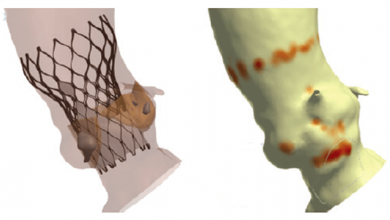Search results
Author(s):
Cameron Dowling
,
Robert Gooley
,
Liam McCormick
,
et al
Added:
2 years ago
Provisional Stenting Tricks
Author(s):
Francesco Burzotta
,
Carlo Trani
Added:
3 years ago
Article
Author(s):
Carlotta Sorini Dini
,
Giulia Nardi
,
Francesca Ristalli
,
et al
Added:
3 years ago
In the 18th century, Edward Jenner and Caleb Hillier Parry, two British physicians, independently noticed that coronary ossification was often present in patients dying of ‘syncope anginosa’.1 Coronary angiography opened the possibility of expanding these observations to living patients and offered revascularisation options. During surgery, it was often possible to modify the position of the…
View more
Author(s):
Peter Mortier
,
Heleen MM van Beusekom
,
Matthieu De Beule
,
et al
Added:
3 years ago
Incomplete stent apposition (ISA) or stent malapposition is the lack of contact between stent struts and the underlying arterial wall. ISA has been associated with significantly higher levels of thrombus deposition1 and is typically assessed by intravascular imaging techniques such as optical coherence tomography (OCT) and intravascular ultrasound (IVUS).2–4 These imaging modalities are useful to…
View more
Author(s):
Demosthenes G Katritsis
,
Ioannis Pantos
Added:
3 years ago
The functional severity of atherosclerotic coronary lesions is the single most important prognostic factor in patients with documented coronary artery disease (CAD). Assessment of the haemodynamic significance of coronary artery lesions by invasive fractional flow reserve (FFR) measurement now has an I-A indication by the European Society of Cardiology (ESC) to identify haemodynamically relevant…
View more
Platinum Chromium Stent Series
Author(s):
Dominic J Allocco
,
Mary V Jacoski
,
Barbara Huibregtse
,
et al
Added:
3 years ago
Article
Drug-eluting Balloon Analysis
Author(s):
Alexander Ruebben
,
Juergen Boeing
,
Norbert Weiss
Added:
3 years ago
Article
Drug-eluting Balloon Analysis
Author(s):
Alexander Ruebben
,
Juergen Boeing
,
Norbert Weiss
Added:
3 years ago
Article
Author(s):
Yan Topilsky
,
Dana Yaron
,
Meytal Bork
Added:
2 years ago
Author(s):
Hector M Garcia-Garcia
Added:
6 years ago
Hector Garcia-Garcia discusses comparison of clinical outcomes between Magmaris and Orsiro in a pooled patient level analysis from BIOSOLVE-II AND III AND BIOFLOW-II.
Filmed by Radcliffe Cardiology on-site at ACC 2018.
This interview was supported by Biotronik
View more















